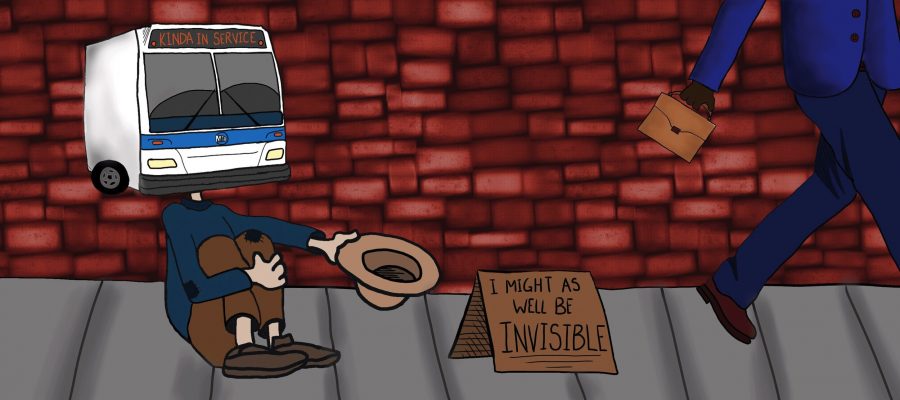Transportation methods affected by climate change
March 9, 2020
“America needs a transformative transportation bill,” The Hill’s Kevin Mills wrote as an opinion piece.
Cities all over the world including in India and China, New York, Los Angeles and Tehran —
where pollution and billowing smoke is widespread — pose significant health threats to civilians.
With millions of people traveling through these cities each day by car, harmful gases like carbon and methane are emitted into the air. Even those using public transportation can be exposed to carbon and methane.
When all cities in just the United States alone are accounted for, transportation alone has a monumental impact on the environment.
The Fixing America’s Surface Transportation Act — also known as the FAST Act — was created to oversee repairs for transportation, yet it does not account for sustainability. FAST was implemented in 2016 and will expire this year.
On Jan. 29, however, Speaker of the House Nancy Pelosi spoke about the House Democrats’ plan to replace the United States’ current transportation bill.
Known as the “Moving Forward Framework,” the act includes spending $760 billion over five years in order to make infrastructure more environmentally sound. The bill seeks to reduce pollution, create jobs and spur growth in the economy.
Pelosi detailed that one focus of the framework is to provide cleaner air. She does state that in order to do so, the number of vehicles currently being driven will have to be curbed.
Rails to Trails Conservancy, a Washington D.C.-based non-profit, is one proponent of the need to switch to greener modes of transportation. Its platform promotes several goals.
First, by reducing the number of vehicles on the road and replacing them with bikes, carbon emissions can be significantly reduced.
Second, the foundation believes that “investing in active transportation facilities will also produce a positive fiscal return on investment by generating more jobs, consumer spending and tourism, while attracting and retaining a skilled workforce with community design that prioritizes the walkable, bikeable features that are hallmarks of good places to live,” according to its website.
This can lead to other issues if biking is the alternative for one’s daily commute, however. Though specifically designated lanes for bikers do exist, biking
safety is a major concern.
In 2018, “the number of pedestrians killed grew by 3.4 percent last year, to 6,283, and the number of cyclists killed rose by 6.3 percent, to 857, even as total traffic deaths decreased,” The New York Times reported this past October.
There are measures being implemented to combat this increase. In December 2019, New York City Mayor Bill de Blasio released legislation for creating the “Green Wave: A Plan for Cycling in New York City.”
The plan includes patrolling areas that are more inclined to accidents by monitoring speeding and blocking bike lanes.
To increase safety for bikers, New York “continues to expand its bike network and has added an average of 62 bike lane miles per year, including over 20 protected bike lane miles,” according to the Department of Transportation.
To lessen injuries, the department also offers free helmets throughout the year at its public events.
Additionally, Citi Bike has announced plans to expand and add bikes to more communities. By 2023, it expects to triple the number of bikes currently found at stations in New York.
To implement the Green Wave plan, the city has committed $58.4 million in new funding over the next five years, with 80 additional new staff members.
As the number of bike related injuries continues to rise, people will be less inclined to travel on a bike through heavy traffic areas. Cutting back on transit would also not be ideal for disabled individuals, who would not be able to ride bikes or walk to get to their destinations.
It is clear then that a plan is needed to not just cut back on carbon emissions and pollution, but also provide a safe and accessible means of travel for all citizens. Thus far, this has been easier said than done.
At the end of the day, the Center for Climate and Energy Solutions “projects that by 2025, U.S. emissions could be 14 percent to 18 percent below 2005 levels, far short of what is needed to address climate change.”
As climate change is a disputed issue amongst global leaders, any plan that could bring about a progression in the fight to quell it is welcomed.








